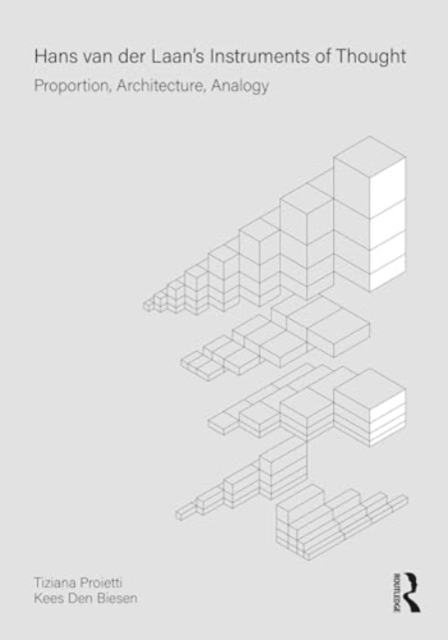
Hans van der Laan’s Instruments of Thought : Proportion, Architecture, Analogy Paperback / softback
by Tiziana Proietti, Kees Biesen
Paperback / softback
Description
The work of the Dutch Benedictine monk and architect Hans van der Laan (1904–1991) offers important insights into the ways in which artifacts address the complexity of human physical, cognitive and social needs.
Van der Laan developed a number of powerful lines of thought, three of which are introduced here: the search for a theory of architecture; the establishment of a three-dimensional system of proportions named Plastic Number; and analogy as the mainspring of human thinking.
This triad of deeply interconnected intellectual strategies represents his most important ‘instruments of thought’ and is rooted in the careful observation of phenomena as they are presented to us rather than relying on conventional beliefs.
Van der Laan's instruments of thought lead us to reconsider the origins of human creation, urging a deeper examination of our perceptual and cognitive response to the limitlessness of the surrounding environment.
On this basis, Van der Laan develops a unique philosophy of culture and design that includes considerations on the relationship between nature, culture, and religious ritual. Although this book is informative, its principal aim is to be formative.
On the basis of Van der Laan’s instruments of thought, the authors develop a methodology to explore the Plastic Number theory and the many ways in which we perceive and interpret proportion.
Reintroducing playful creativity and intellectual exploration into architectural pedagogy and design practice, this book is a gateway for a deeper understanding of the effects of the built environment on human behavior and the various ways in which the human mind perceives and decodes artifacts.
Information
-
Pre-Order
- Format:Paperback / softback
- Pages:194 pages, 108 Line drawings, black and white; 108 Illustrations, black and white
- Publisher:Taylor & Francis Ltd
- Publication Date:23/07/2024
- Category:
- ISBN:9781032295381
Other Formats
- Hardback from £130.00
Information
-
Pre-Order
- Format:Paperback / softback
- Pages:194 pages, 108 Line drawings, black and white; 108 Illustrations, black and white
- Publisher:Taylor & Francis Ltd
- Publication Date:23/07/2024
- Category:
- ISBN:9781032295381






